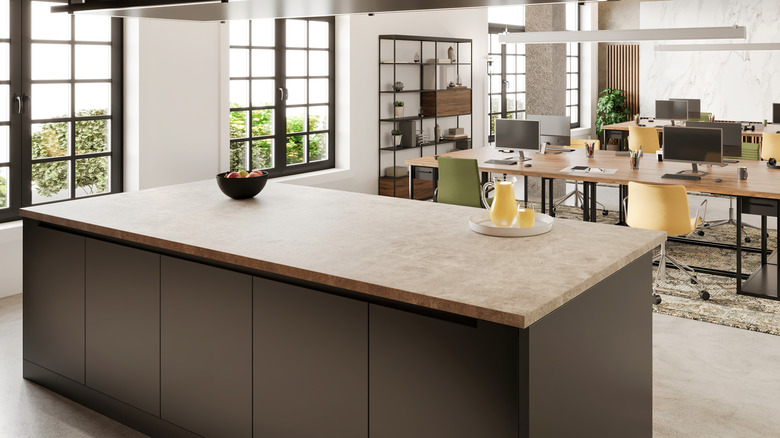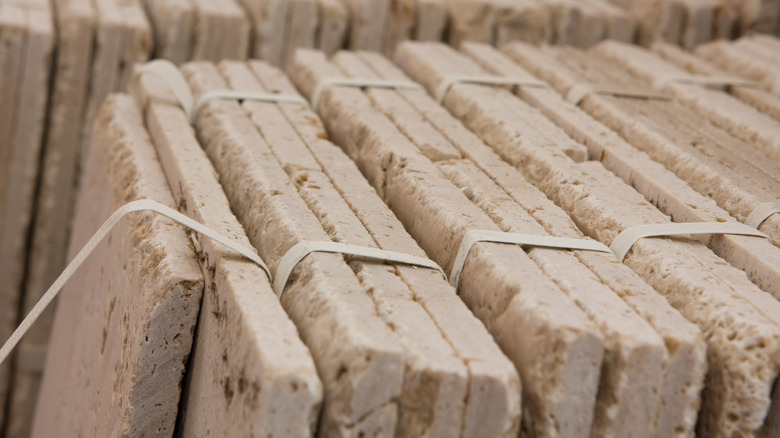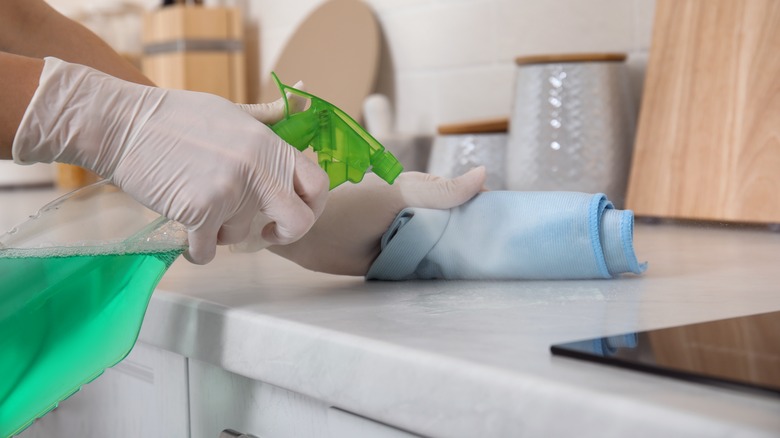The Pros And Cons Of Investing In Travertine Countertops
You've finally had enough of the cracks and chips on your existing kitchen countertops and want to invest in something that's beautiful, durable, and transforming to your kitchen. There are certainly plenty of options out there, from granite and marble to laminates. With so many choices, it's easy to overlook travertine countertops. While less common in some areas, they offer a number of benefits, including beauty and durability, though they can be slightly expensive in some cases. As you're exploring all of the options available to you, consider the pros and cons travertine countertops can bring to your kitchen.
As a natural stone, each piece of travertine presents its own beautiful features and exceptional details. This stone, which is a member of the limestone family, tends to be available in warm colors like gold, silver, and ivory, but can also be found in brown hues and other shades. Travertine develops in areas near mineral springs or geysers, which offer intense heat to change and modify the limestone to form the beautiful patterns present in this stone. Some even find travertine to have some of the unique characteristics of marble, with beautiful specks or veins of color.
Like all natural stone countertops, there are some pros and cons of using travertine in your home. It's one of the stones more likely to stain, making it one of the countertop materials that are hardest to keep clean. But with its versatility and often lower price than competitors like granite and marble, it should be on your short list of countertops to consider.
The benefits of installing travertine countertops
Travertine is a beautiful, softer stone that creates a significant impression in any kitchen or bathroom where it is placed. It's unique in that it offers a more vintage look rather than the ultra-modern look of quartz, high-end glass, or marble. As a natural stone, it's cut to fit your specific needs, including as a countertop, a backsplash, and even with softened edges that allow for a mounted sink.
For many people, one of the most significant benefits of travertine is the lower cost. While it's more expensive than some products like laminates, travertine tends to be one of the less expensive natural stones. Through prices range widely by stone availability and location, you can expect a cost range of $25 to $100 per square foot for travertine, with a 28-square foot countertop for a larger kitchen costing around $1,000 to $2,500 (or more). Both granite and marble cost more. The cost of granite countertops is often in the range of $35 to $75 for basic, readily available stone, and much higher for rare or dramatically colored slabs. If you want a natural stone that's beautiful for less, travertine provides that. It's also a great choice for those who want to bounce natural light around their kitchen, since it tends to have a beautiful glossy polish to it. Finally, note that this is a durable stone and will last for a lifetime or longer. Consider that it's a stone heavily used in the Roman Empire in structures that remain today.
The disadvantages of travertine countertops
With so much positivity to offer, it may seem like travertine is the route to take. However, there are some limitations to this stone that you should consider. The first is, unfortunately, it requires more maintenance than other stones. It tends to be more porous than other stones, which can make spilled sugary drinks or splashes of tomato sauce problematic. There are sealants that can be applied, but you will need to follow the manufacturer's directions on how frequently to add them to keep the stone from absorbing stains.
Along with that comes the limitation of the types of cleaning products you can use. Don't even consider spraying bleach on it or using any type of abrasive scrubbing pad. That's going to damage the protective coating. You'll need to keep it clean with mild soap and water. In contrast, both granite and marble are less likely to need this much attention to keep them looking good. Also note that, because of how porous it is, you do need to work to keep bacteria at bay. If you don't do so, bacteria can invade the tiny holes in the surface of the stone and then flourish.
While factors like installation costs and durability remain the same as other natural stones, keep in mind that travertine countertops will cost more to maintain over that long lifetime, and that could play a role in the overall affordability benefit this product offers.


